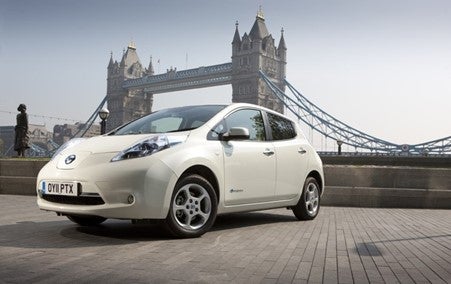Nissan Motor has introduced a new engine technology claimed to delivers a balance of responsiveness and power, fuel efficiency and low emissions.
The new system combines the technologies behind the automaker’s newly developed variable valve event and lift (VVEL) and continuous valve timing control (C-VTC) to deliver significantly enhanced performance.
The VVEL system uses a rocker arm and two types of links to close the intake valves by transferring the rotational movement of a drive shaft with an eccentric cam to the output cam.
The movement of the output cam can be varied by rotating the control shaft within the DC motor and changing the fulcrums of the links. This makes a continuous adjustment of the valve lift amount possible.
The technology will be available in both Nissan and Infiniti models.
How well do you really know your competitors?
Access the most comprehensive Company Profiles on the market, powered by GlobalData. Save hours of research. Gain competitive edge.

Thank you!
Your download email will arrive shortly
Not ready to buy yet? Download a free sample
We are confident about the unique quality of our Company Profiles. However, we want you to make the most beneficial decision for your business, so we offer a free sample that you can download by submitting the below form
By GlobalDataNissan said it would install the VVEL system, which contributes a claimed reduction in carbon-dioxide emissions of up to 10%, on its vehicles sold worldwide from fiscal year 2007 under the so-called Nissan Green Program 2010.
The first product to feature VVEL technology is the Infiniti G37 coupe, scheduled to be unveiled at the upcoming New York motor show in April.
While conventional engines control air intake using a throttle valve, VVEL-equipped engines do this directly at the intake valves, continuously controlling their valve events and lifts. C-VTC and VVEL together control the valve phases and its valve events and lifts, allowing free-control of the valve timing and lift. This, Nissan said, results in more efficient airflow through the cylinder and significantly improves responsiveness, optimising the balance between power and environmental performance.
The new engine offers various advantages depending on driving range.
At low-to-mid load ranges, the system controls air intake at the intake-valve, immediately before it enters the combustion chamber, in contrast with conventional engine air intake via a throttle valve, leading to increased efficiency by easing airflow through the cylinder.
In the low- and medium-rpm ranges, intake-valve lift is kept low to reduce camshaft friction and improve fuel efficiency.
Controlling air intake at the intake-valves improves acceleration response by allowing more dense air into the cylinders from the start of acceleration.
In the low-rpm range, the intake-valves open for a shorter period, preventing blowback of the air-fuel mixture and improving torque.
In the high range, greater intake-valve lift allows increased air intake to deliver greater torque outputs.
Intake-valve timing is optimised on start-up, when the engine is still cool, to quickly raise the temperature of exhaust gases and more quickly activate the catalytic converter.
Hydro-carbon emissions are reduced in the low-to-medium range by keeping intake-valve lift low, speeding intake flow and dispersing the fuel into a finer mist, resulting in more efficient full combustion.
Nissan said VVEL improves fuel efficiency most effectively in the low-to-medium operating range, and therefore is best matched to multiple-cylinder and higher displacement engines, that typically operate within that range.
Under the Nissan Green Program 2010, Nissan has announced plans to develop petrol-powered engines with CO2 emissions reduced to levels comparable with diesel engines, to be available globally by 2010. For multiple-cylinder, high-displacement engines, the automaker will combine VVEL technology with the direct-injection system.







